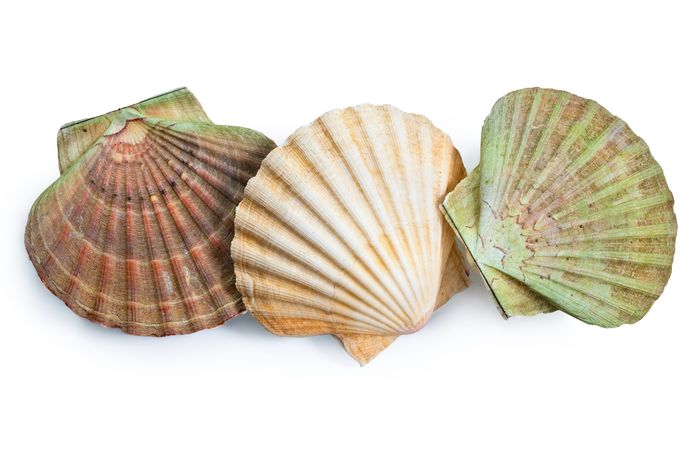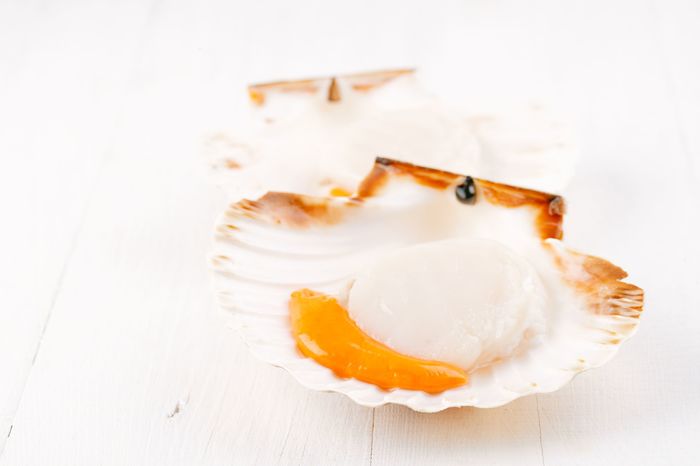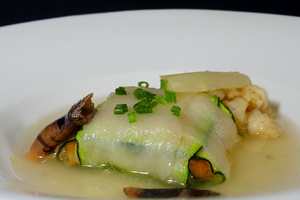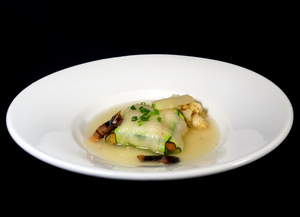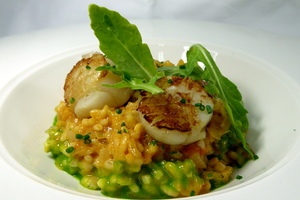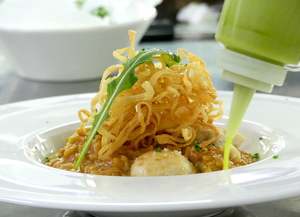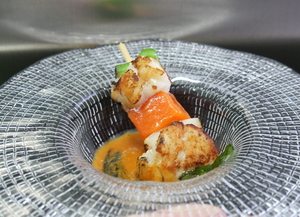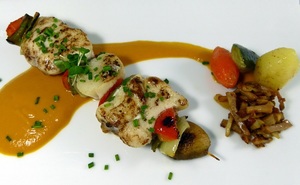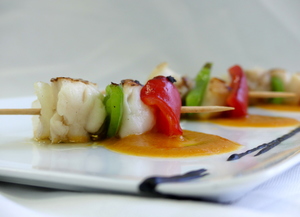Frozen scallop
Scallops belong to the Pectinidae family, Ostreoida order. The scientific name for the common Galician scallop is Pecten jacobaeus whereas the one given to the European scallop is Pecten maximus.
The scallop is a bivalve mollusk closely related to clams and oysters. It lives in deep waters of up to 100m in most seas, on clear firm sandbanks near the coastline. It is a hermaphrodite and it develops the male organs first. Its valve is wavy, and the lower part is bigger than the upper part, which is almost flat. The undulations grow from the vertex of each valve, making it look fan- shaped. Its edges are sharp and wavy. The valve closes and opens thanks to a unique and powerful muscle called the abductor.
The biggest specimens do not usually grow over 15cm and it takes them 4 years to reach a size at which they can be sold (80mm). They feed on phytoplankton and organic particles suspended in water. They rarely fix on rocks, swim in bursts by quickly opening and closing their valves or they stay still on the seabed over their inferior valve.
-
Type of dish
- Beers
- Cocktails
- Breakfasts and brunch
- Burguers
- Juices, milkshakes and beverages
- Shellfish
- Bread and pastries
- Pizzas, patty
- Dessert
- Pasta
- Sándwich
- Pastries
- Finger foods
- Ice creams and sorbets
- Legumes
- Salads
- Eggs
- Patty
- liqueur
- Harvard plate
- Main course
- Meats
- Fish
- Birds
- Vegetables
- Soups and creams
- Rices
- Coffee, chocolate and infusion
- Cheeses
- Appetizers and canapes
- Temperature
- Cuisine type
- Additional culinary preparation
- Conservation technique
- Seasonal recipes
-
- Aromatic herbs
- Beverages
- Big game hunt
- Bread and pastries
- Canned goods and pickles
- Cereals
- Condiments, spices and additives
- Cooked, salted, preserved and cold meats
- Dried fruits and nuts
- Dry pulses
- Edible oils and vinegars
- Eggs and derivatives
- Feathered game hunt
- Fish cuts
- Fishes
- Insects
- Kitchen and bakery tecniques
- Kitchen and bakery utensils
- Meat cuts
- Meats
- Milk, cream and derivatives
- Mushrooms
- Offal
- Pasta, rice, flour and derivatives
- Poultry
- Seafood
- Service techniques
- Service utensils
- Vegetables cuts
- Vegetables, fruits, tubers and seaweed

